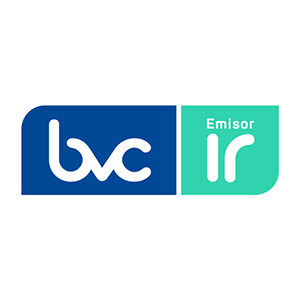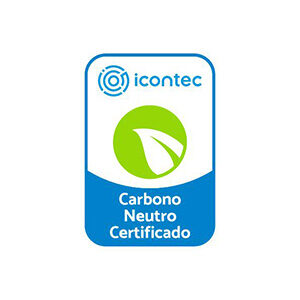At Celsia, we have assets to generate clean, reliable energy that contributes to the sustainable development of the countries where we are present.
GRI (3-3) The Company manages the life cycle of generation assets by complying with operational Occupational Health and Safety, socio-environmental, quality and legal controls. In addition, it considers the balance between costs, risks and opportunities, to guarantee the availability, reliability and security required in the Organization’s Business Plan of the National Electrical System.
We have a strategic asset management plan (PEGA, in Spanish) with a short-, medium- and long-term vision, in which the established objectives are aligned with the Organization’s MEGA and for which the behavior of the climate variables, energy prices in the market, fuel availability, requirements of environmental authorities, among others, is taken into account, with which we guarantee the best operational and tactical efficiency.
Our Management
GRI (3-3) At Celsia, we have several success factors to guarantee a world-class operation:
- Practices that guarantee the health and safety of all employees;
- Respect, protection and conservation of ecosystems;
- Relationship and adequate knowledge of the Stakeholders in the area of influence of the generation plants;
- Reliable assets that support market demands;
- Knowledge of the facilities and equipment and trained, evaluated and competent personnel;
- Strict compliance with operational controls;
- Short-, medium- and long-term planning and programming with excellence;
- Implementation of asset management and operational discipline for the unification of procedures.; and
- Intervention of the generation units to define investment strategies focused on the efficient use of resources (water, sun, wind and fuel), increased efficiency of turbines and generators, as well as technological updating and innovation.
The Power-Generation Business, as well as other businesses, contributes to leveraging innovative investments, such as electric mobility and power generation from unconventional renewable sources. This business currently represents 8.27% of the installed capacity of the National Interconnected System (SIN, in Spanish).
Installed Capacity
We have 36 power-generation plants (22 hydroelectric, three thermal, one wind and 10 solar farms), 135 solar roofs and floors, and 665 solar roofs for homes, totaling an installed capacity of 2,008.73 MW, distributed in 1,247.64 MW hydraulic, 519 MW thermal, 49.5 MW wind and 192.59 MW photovoltaic.
Generated Energy
GRI (EU2) During 2022, we generated 6,357.60 GWh, which represents an increase of 686.3 GWh, compared to 2021. We present some outstanding elements of this result:
Hydraulic Generation
The largest amount of hydraulic generation has been presented in recent years, which means an increase of 8.48% in relation to 2021 and responds to the use of increases in the energy contributions of the basins that supply these resources, especially in the plants with a reservoir in Colombia. This made it possible to compensate for the dry conditions that occurred in Central America and the output of the Estí Hydroelectric Plant, of the company AES, which impacted the generation of the Dos Mares Hydroelectric Complex in Panama.
Thermal Generation
In 2022, the exit of the TG5 gas turbine was authorized. The installed capacity of thermal generation (simple diesel cycle) was reduced from 102.2 MW to 68 MW in Central America, while in Colombia the Tesorito Thermal Plant came into operation, with 200 MW of net effective capacity.
Wind and Photovoltaic Generation
- The growth of the installed capacity in photovoltaic projects in Colombia, Honduras and Panama continues. Among them, the entry into commercial operation of two farms in Tuluá, the Sincé, Palmira and San Felipe farms in Colombia, reflecting an increase compared to the previous year, both in installed capacity and in generated energy.
- The purchase of energy generated by photovoltaic farms stands out, represented in projects such as: Tucanes, Los Caballeros, La Medina, Cerritos and Montelíbano, which reached 21.6 GWh during 2022.
Cogeneration
During 2022, surpluses amounting to 190.9 GWh were purchased from cogenerators in Colombia, such as the Mayagüez, Manuelita, San Carlos and Carmelita sugar refineries, the latter until September. On the other hand, 9.5 GWh were purchased from self-generators, including the Argos plants in Cartagena, Yumbo and Toluviejo, all located in Colombia.
Generation Mix
At Celsia, we are committed to our Sustainability Strategy focused on renewable energy. We have 463.5 MW of photovoltaic solar energy and 330 MW of wind energy under development, the incorporation of which into the current portfolio of generation resources is scheduled for 2025.
Generation Efficiency
GRI (EU11) The reported efficiency of the Meriléctrica Thermal Power Plant (simple cycle) in Barrancabermeja, Colombia, is 34.94%, corresponding to the tests carried out at the beginning of 2022, when the Plant’s net-effective capacity was 164 MW with a Heat Rate of 9,000.27 Btu/kWh. Although the reported generation efficiency is the same as in 2021, the net-effective capacity dropped from 167 MW to 164 MW, due to the natural wear and tear of the generation-unit components due to the time of operation.
Availability
GRI (EU30)
- In 2022, availability increased considerably due to the change of the main step-up transformer of the Meriléctrica Thermal Power Plant, located in Colombia.
- The Tesorito Thermal Power Plant in Córdoba, Colombia, began commercial operation on September 14, 2022, with 200 MW of net-effective capacity. The accumulated availability of this plant, between the months of September and December, was 97.5%.
Principal Results in 2022
GRI (3-3) Our achievements are summarized in the results of the key indicators defined in the strategy, demonstrating coordination between the short- and long-term sales and the Purchase- and Sale-Management Teams, with the Operation and Maintenance Teams of the generation plants.
The relevant milestones reached during 2022 include the following:
Continuation of the AGDC Technology Update Project, with 70% progress in Alto Anchicayá, Valle del Cauca, Colombia;
Implementation of a system for sustainable-sediment management at the Bajo Anchicayá Power Plant, Valle del Cauca, Colombia;
Consolidation of the remote operation from the Advanced Vision Operations Center (NOVA, in Spanish) of 178 MW of the Tuluá Alto, Tuluá Bajo, Amaime, Río Piedras, Hidromontañitas, San Andrés De Cuerquia and Cucuana Hydraulic Power Plants, in Colombia;
Technological upgrade of the power transformers of the Río Piedras Hydraulic Power Plant in the Department of Antioquia, Colombia;
Recovery of the medium-voltage cell of the Tuluá Bajo Hydraulic Power Plant in the Department of Valle del Cauca, Colombia;
Recovery of the shielding of the loading pipe and inclined branch of the Prado Hydraulic Power Plant in the Department of Tolima, Colombia; and
Construction of the Tesorito Thermal Power-Generation Plant in Córdoba, Colombia.
Our generation assets have rigorously projected maintenance programs and an average annual investment plan of USD 25 Million, in addition to a group of highly qualified employees for the intervention of the generation units and for the definition of investment strategies, focused on:
The efficient use of water;
Increased turbine and generator efficiency;
Technological updating; and
Innovation.
During 2022, we received recognition from:
of Colombia for the investment project called the Advanced Generation Diagnostic Center (AGDC).
of Colombia for the investment project called Development of a Sustainable Sediment-Management System for the Bajo Anchicayá
GRI (3-3) Short-, Medium- and Long-Term Objectives:
Short Term(0 to 2 years)
- Continue with the consolidation of our solar-generation offer in Colombia and Central America.
- Develop the elements required for the execution of detailed Inhouse Engineering for photovoltaic projects on floors and roofs.
- Implement the Advanced Generation Diagnosis Center (AGDC) System for the hydraulic-power plants in Colombia, to improve asset management, anticipate failures and avoid corrective measures that affect availability and generation deviations.
- Carry out the technological upgrade of the power cables (230 kV) for the Alto Anchicayá Power Plant, Valle del Cauca, in Colombia, going from oil-immersed to a dry-type cable technology.
- Execute the technological update of the speed regulators of the Salvajina Hydraulic Power Plant, in Colombia, to improve operating conditions and increase the Organization’s income, with the implementation and offer of the Automatic Generation Control (AGC) System of the generation units.
- Implement the Supervisory Control and Data Acquisition (SCADA) system in the Bajo Anchicayá Hydraulic Power Station, in Colombia.
Medium Term(3 to 5 years)
- Develop a wind project in Costa Rica to take advantage of the possible award from the Costa Rican Electricity Institute.
- Continue with the identification and development of initiatives that allow increasing the installed capacity in solar- and wind-generation plants, both in Colombia and in Central America.
- Carry out the technological update of the 230 kV Gas-Insulated Switchgear (GIS) Encapsulated Substation of the Salvajina Hydraulic Power Plant, in the Department of Cauca, Colombia.
- Advance in the technological upgrade of the power cables (230 kV) for the Salvajina Plant, Valle del Cauca, in Colombia, by going from oil-immersed to a dry -type cable technology.
Long Term(6 or more years)
- Continue with the identification of new business models or markets that allow the development of initiatives aligned with the Company’s Sustainable and Renewable Strategy.
- Implement the technological update of the power transformers of the units of the Bajo Anchicayá Hydraulic Power Plant, in Valle del Cauca, Colombia.
- Carry out the change of the power cables of the Bajo Anchicayá Hydraulic Plant.
- Carry out the change of the turbines of the Calima Hydraulic Power Station, in Valle del Cauca, Colombia.
- Automate the aqueducts of the hydraulic power plants to optimize operation and maintenance.
- Carry out the increase in the efficiency of the Francis-type turbines of the Salvajina Hydraulic Power Plant, in Valle del Cauca, Colombia.
- Enter new markets in the Caribbean region in Colombia and Central America.
NOVA: Advanced Vision Operations Nucleus.
AGDC: The Advanced Generation Diagnostics Center.
PEGA: Strategic Asset-Management Plan.
MEGA: The large and ambitious goal (Meta Grande y Ambiciosa) that provides strategic guidelines to the Organization
GIS: Gas-Insulated Switchgear.
Installed Capacity: it is the production potential or maximum volume of production that can be achieved during a given period of time, taking into account all available resources.
Unconventional Renewable Sources: All those sources of energy generation in which the consumption, expense or depletion of its generating source is not incurred. These include hydraulic and wind energy, among others.
Heat Rate: The heating test that is carried out on the turbines of thermal power plants to measure energy-conversion efficiency
Cogeneration: This is a highly efficient energy system, in which electric and thermal energy is simultaneously obtained from primary energy, which is usually obtained through the combustion of fossil fuels, such as gas.
Self-Generation: The generation of electrical energy carried out directly in our home, school or business. As a requirement to be able to inject it into the grid, it must have been generated using non-conventional renewable energy. The self-generated energy will supply part of the total electricity consumption.






